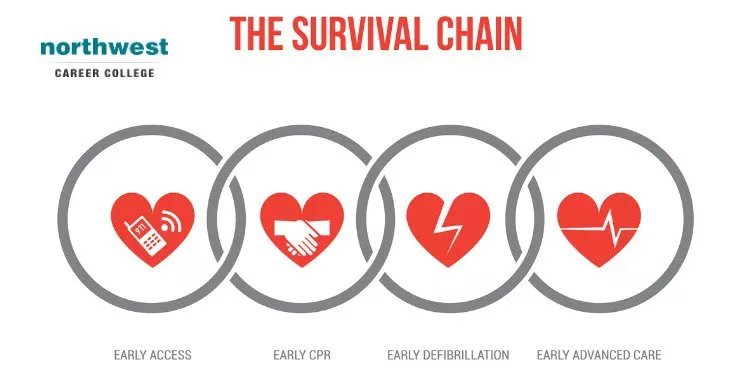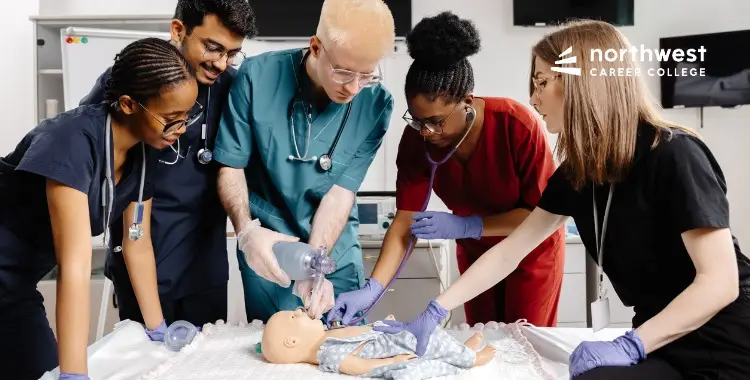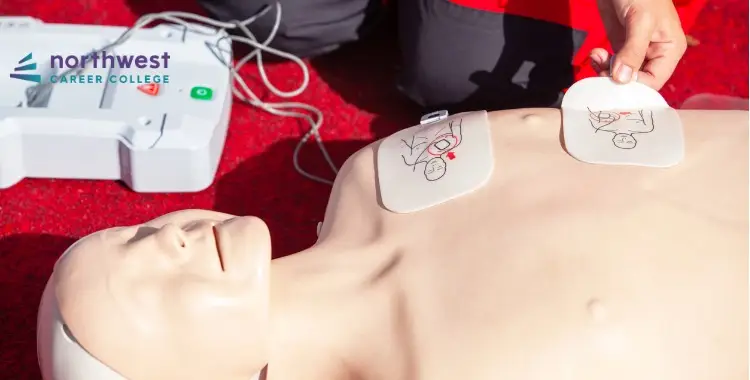The 7 Essential Steps of CPR
- CPR
- March 11, 2024
- 3.7k views
- 3 min read

Quick and effective application of cardiopulmonary resuscitation (CPR) can double or triple the survival chances of someone suffering from a cardiopulmonary arrest.
While there is no replacement for the kind of affordable, quality CPR classes that Northwest offers, there are seven easy steps that you can use to assist someone who is experiencing a life-threatening emergency.
- Call the emergency services – The first thing you should do in any emergency situation is to call the emergency services as fast as possible.
Not only does that mean that an ambulance will already be on its way, but the emergency services operator can also help to talk you through the steps of CPR.
- Position the patient – Before attempting CPR, make sure the patient is lying on their back and is on a firm surface. You should then kneel beside the patient and place the heel of your dominant hand on the center of the patient’s chest.
- Interlock your fingers – Place your non-dominant hand on top of the one that is on the patient’s chest and interlock the fingers of both hands together by curling the fingers of the top hand through the fingers of the bottom hand.
- Start chest compressions – Lean forward so that your shoulders are directly over the patient’s chest and press down, using the weight of your body to depress the patient’s chest by about two inches.
Give 30 compressions at a rate of 100 compressions per minute. Hum the Bee Gees song “Stayin’ Alive,” to keep yourself in rhythm. - Give rescue breaths – Tilt the patient’s head back and lift their chin to open the airway. Pinch the nose and open the mouth. Take a normal breath, put your mouth over the patient’s, and blow until you can see his chest rise.
According to the American Heart Association (AHA), one rescue breath can be given every 6 to 8 seconds and the breath should take approximately 1 second to administer.
If you are uncomfortable with the idea of performing rescue breaths remember that, according to the American Heart Association, performing chest compression-only CPR for a cardiac arrest has the same statistical odds of saving a person’s life as CPR with rescue breathing. - Repeat the chest compressions and rescue breaths – Repeat the cycle of 30 chest compressions, followed by two rescue breaths.
Remember that you will need to keep this rhythm until the emergency services arrive, which could take some time. If there are other CPR capable individuals with you, it’s best to trade off performing CPR with them every 5 minutes or so, to avoid becoming exhausted.
Learn To Save Lives
Here at Northwest Career College, we are committed to providing affordable, quality CPR Classes to the Las Vegas community. We pride ourselves on being an American Heart Association (AHA) testing center and we offer Las Vegas CPR classes designed to fit your personal needs and professional schedule. As part of our “student-focussed” approach to education we also off our CPR classes free of charge to all of our students. Call us today on (702) 403-1592 to book your CPR class and become qualified to save a life in just four hours!



